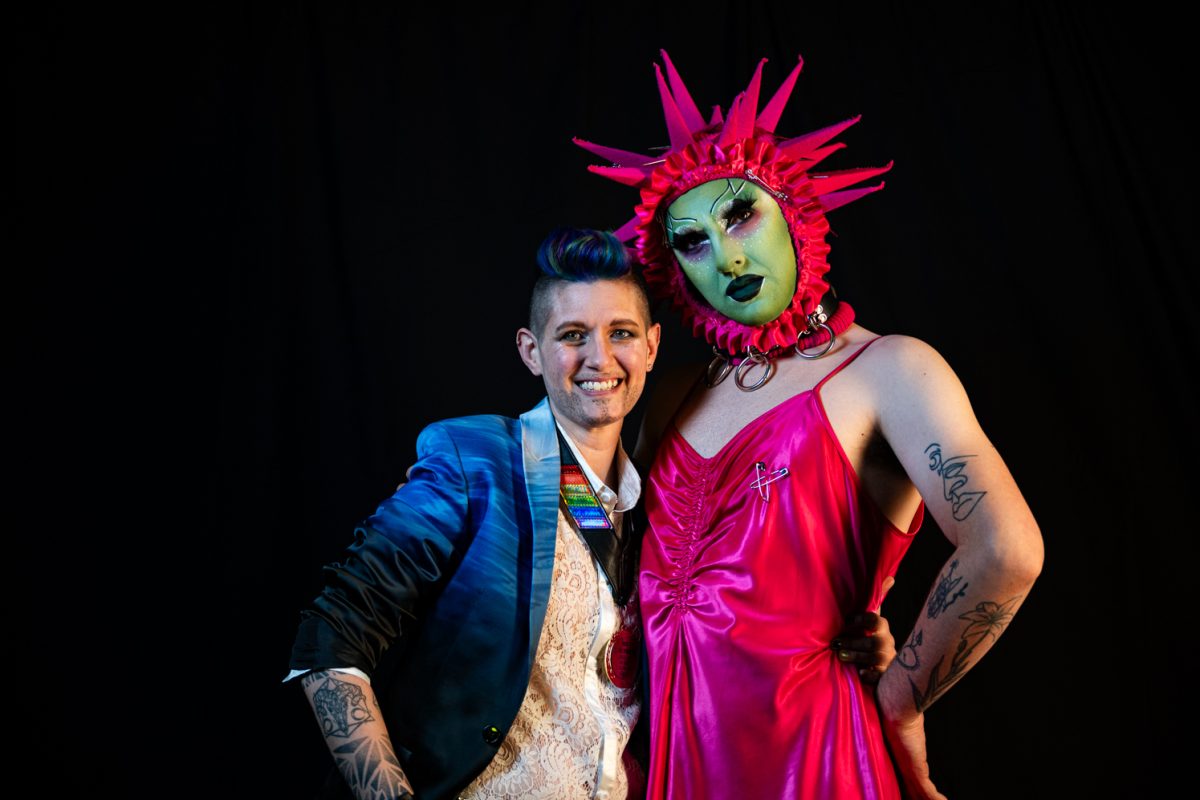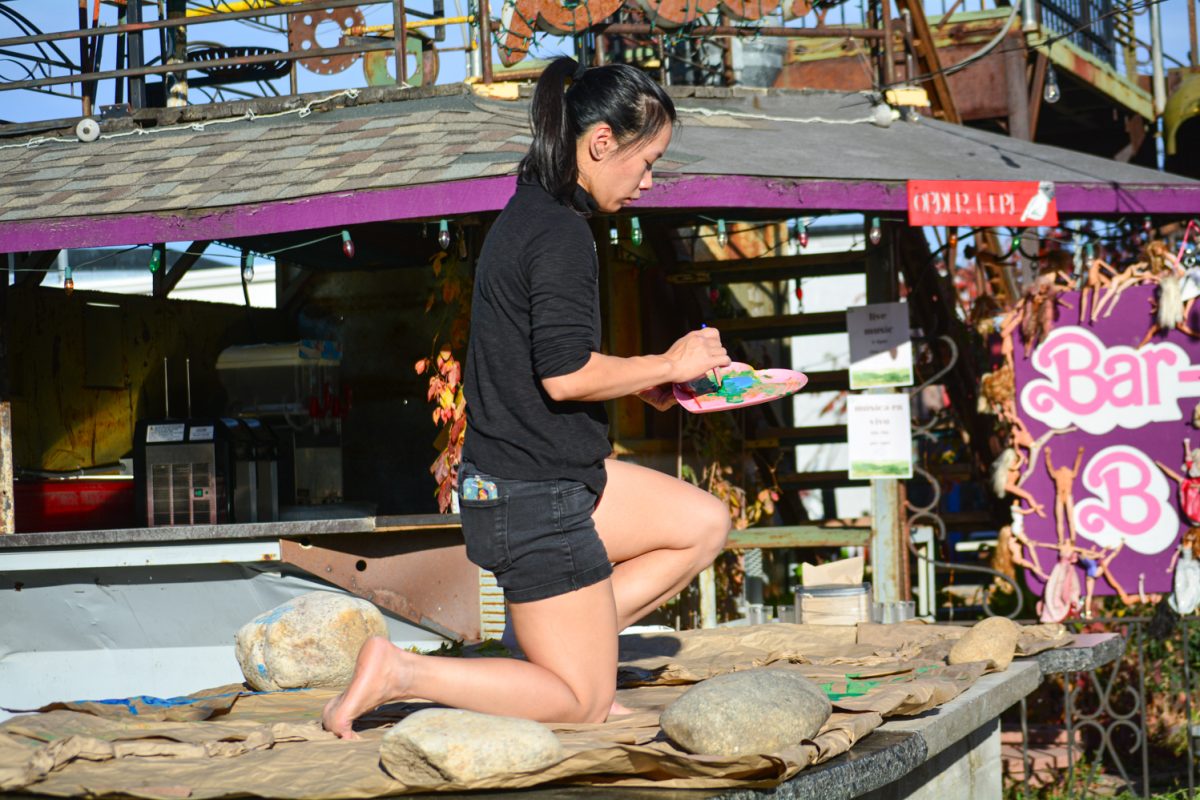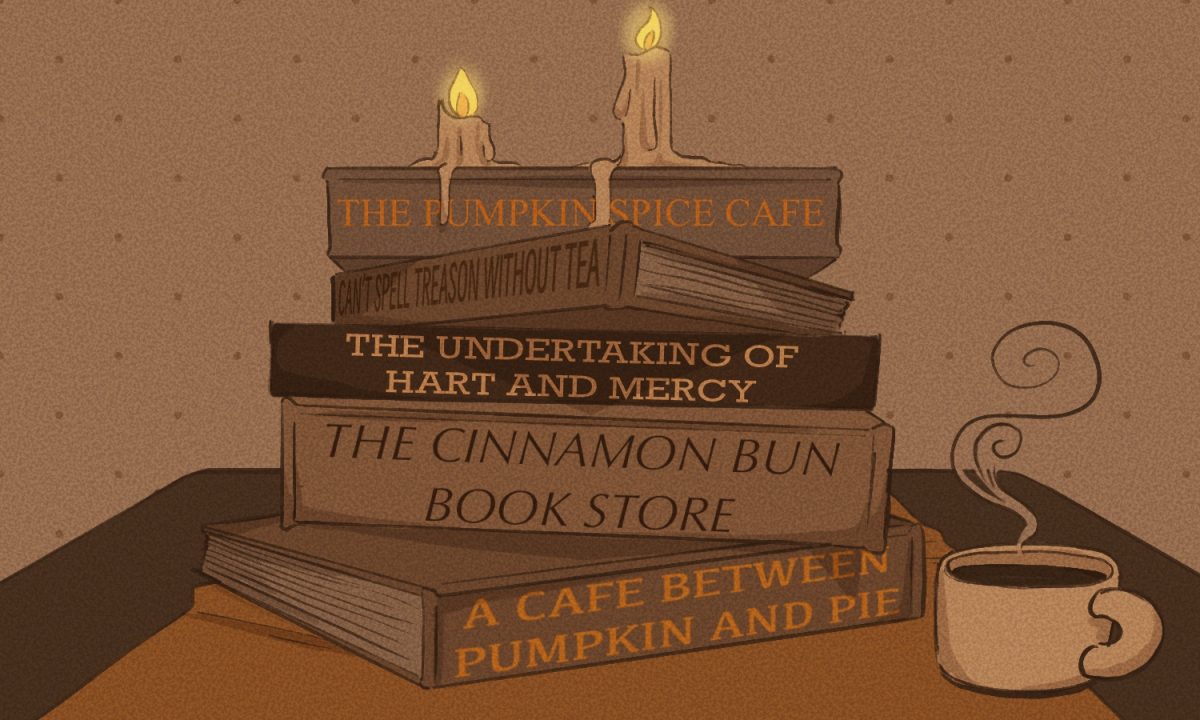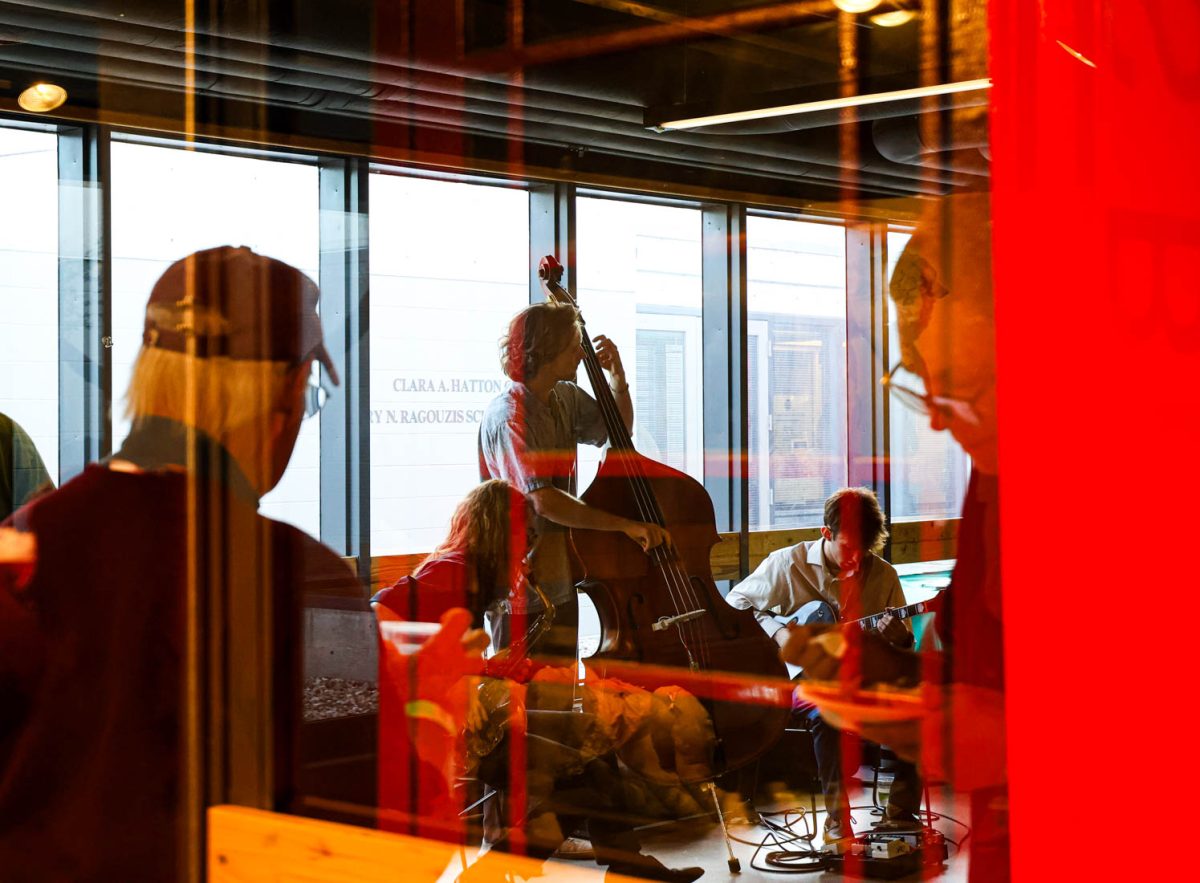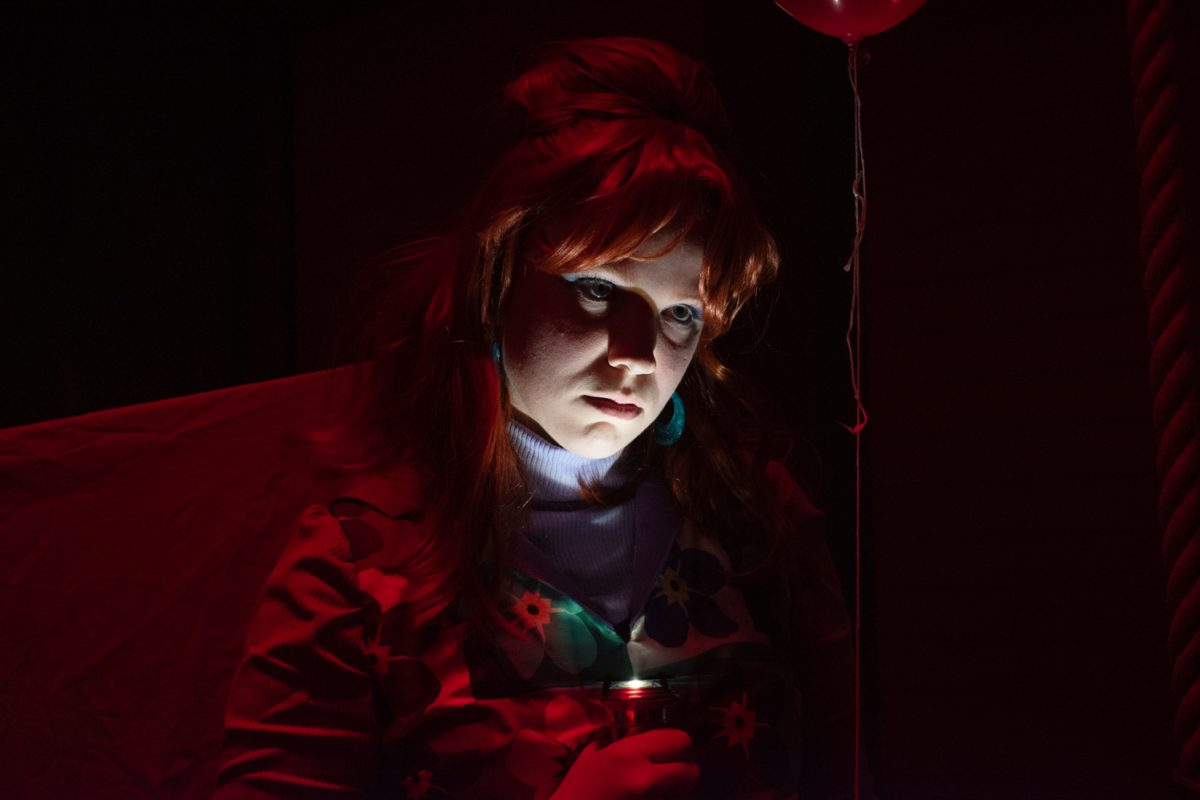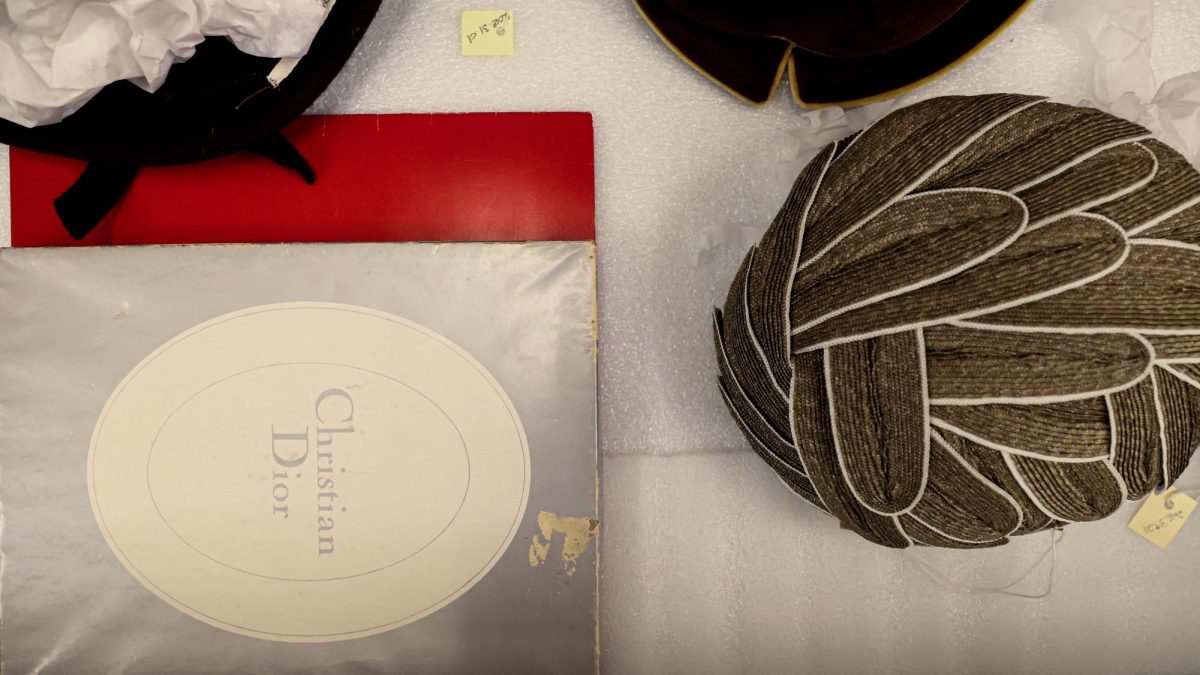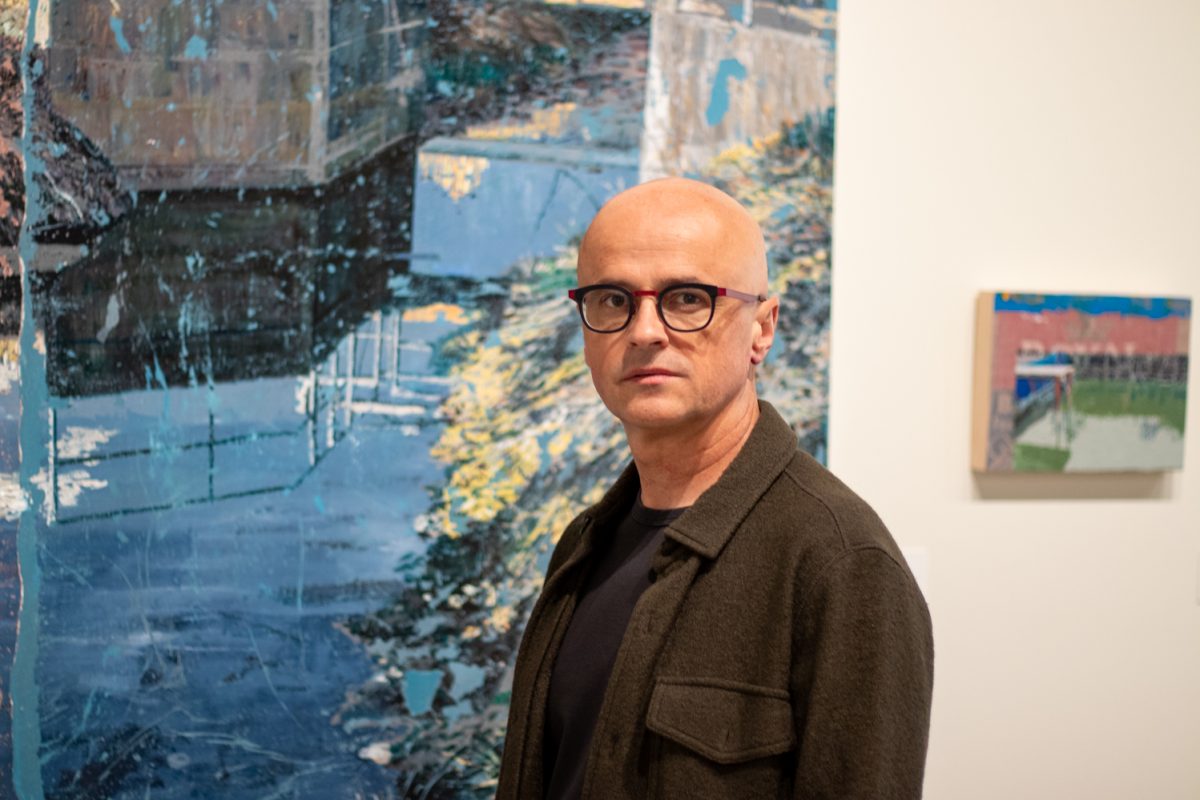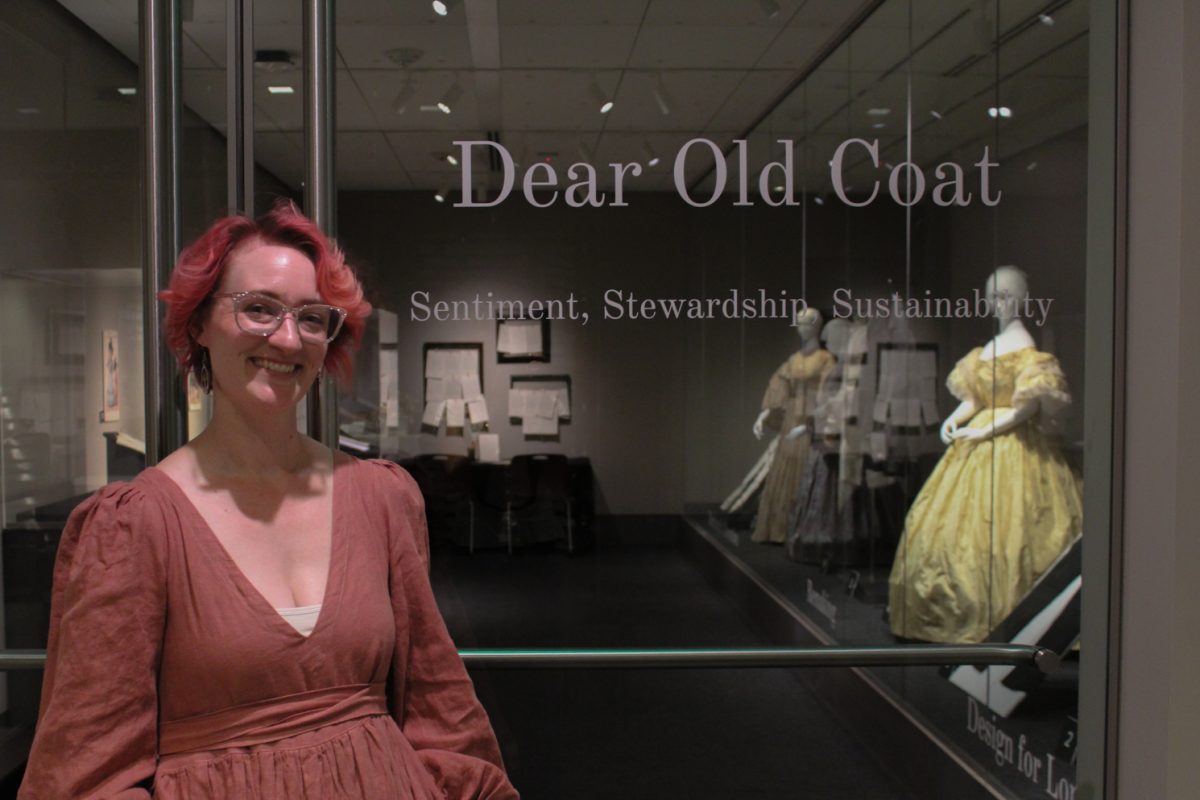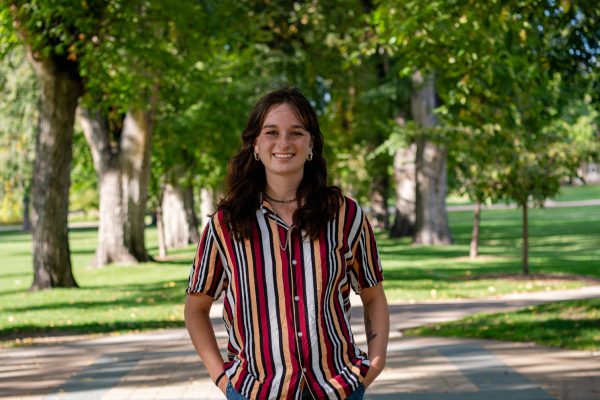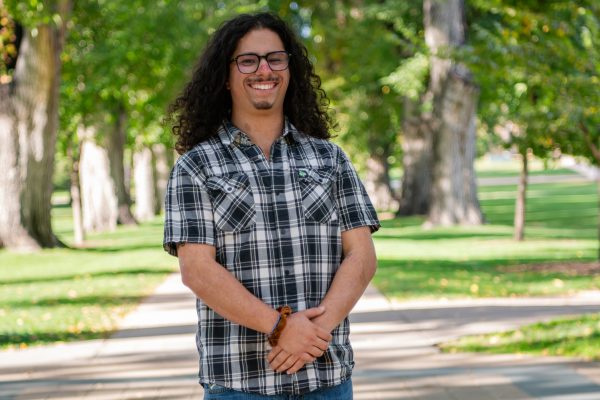The reflection of disco balls and shimmering pride flags fill an intimate room with sparkle and joy.
R Bar and Lounge, located at 107 E. Laurel St., is a safe space for many LGBTQIA+ identifying FoCo residents. With community activities such as karaoke nights, drag brunches and dance parties, the self-proclaimed “alternative bar” is a hot spot for Fort Collins drag performers.
“Drag is really big on supporting each other, so if you’re a young queen or a new queen, they’re big about supporting that community,” said Amanda Jo Reisenweber, the R Bar’s social media and marketing coordinator.
Frequent R Bar performer Stephen Tafoya, whose stage name is YungRaccoon, moved to Fort Collins in 2017 and got their start in Colorado State University’s annual drag show.
“I find that I get the best response when I can just express myself freely and not be put into a box.” – Stephen Tafoya, Fort Collins drag performer YungRaccoon
“I kind of took a leap,” Tafoya said. “I didn’t have any friends who did it at the time. I started on Halloween, so I asked one of my friends to get me in drag, which was literally just cross-dressing, but it was super fun.”
After two years of solely tip work, YungRaccoon eventually proved themself as a talented drag performer, earning spots as a permanent cast member in shows at The Whisk(e)y, The Atrium and R Bar.
“It was kind of a rough start because I don’t do traditional drag,” Tafoya said. “I do drag creature kind of things, so a lot of people saw me and weren’t really sure about it, so I really had to prove myself.”
Tafoya said they gleaned some fashion and makeup inspiration from performers like Juno Birch and Trixie Mattel.
“I do a lot of sewing (and) a lot of cardboard construction,” Tafoya said. “I’ve always had a craft stash. I started printmaking by myself, collage work, painting at home.”
Tafoya’s outfits include a lot of spikes, leather and heavy jewelry. Their signature hoods are the “most important part of their costume,” Tafoya said, and they are inspired by Maurice Sendak’s “Where the Wild Things Are,” specifically the onesie the character Max wears.
“It kind of fits my story, too, because I wanted to be where the wild things were,” Tafoya said. “I wanted to be a drag queen.”
Because YungRaccoon’s look is so original, finding appropriate makeup tutorials was a bit of a challenge, but after some experimenting, they settled into a suitable routine.
“Covering my eyebrows is probably the very, very first step, and that takes, like, 20 minutes,” Tafoya said.
Accomplished with Elmer’s glue and a rat tail comb, the eyebrows take two or three layers, depending on how hot the weather is.
“I start by picking the color foundation I want to do that night or whatever’s left in my brushes from the last show,” Tafoya said.
They custom-mix the foundations together to get what they want on a piece of tin foil to help melt the paint.
“I really try and stay away from the traditional drag female impersonation because I think it’s boring, in my opinion, for me,” Tafoya said. “I tried to do that makeup, and it just didn’t really sit with me.”
Despite female impersonators being the more traditional form of drag, the freedom to be creative is imperative, Tafoya said.
“I find that I get the best response when I can just express myself freely and not be put into a box,” Tafoya said.
Along with using drag as a form of self-expression, the accepting community Tafoya was immersed in enabled them to feel more comfortable in their own skin on and off the stage.
“Drag was a way for me to work past my social anxiety because it got really bad after high school, so I needed a place to belong, and people weren’t queer enough for me, and I was too queer for other people, so I needed to find a space where I felt really welcome,” Tafoya said.
Previous Mister Gay Pride of All Colorado and Mister Rocky Mountain Shining Star are just a few of the titles that MaveRick Smith, self-proclaimed “drag daddy of Colorado,” holds after his eight years of experience.
“Here in Fort Collins when I first started, we really didn’t have many drag kings,” said Smith, who uses he/him/his pronouns onstage and any pronouns offstage.
Smith got his start after helping out at a fundraiser that didn’t have enough performers; he was praised for his stage presence and ended up joining the longest-running drag troupe in Northern Colorado, Glitter Drag Show.
“It might be a bit harder for upcoming queens because there’s so many, … but you still have to overcome the discrimination of being a drag king, … like, drag kings can’t be as entertaining as drag queens,” Smith said.
Smith noted that even within the LGBTQIA+ community, there is still a lot of sexism.
“It is more challenging for drag kings to hit that same elevated level — they don’t get as much attention; they don’t get as many opportunities presented to them,” Smith said. “There’s a lot of performers that identify as nonbinary, and that’s a cool part of it. It is very open for interpretation. It’s art.”
Smith is well known for his show-stopping boots and buys a lot of his costumes online. The most consistent part of his costume is the makeup, which includes lots of contour, eyeliner and a beard.
Gender neutrality is something Smith has been experimenting with ever since the beginning of his drag journey, enabling him to express gender fluidity outside of drag. Although male artists such as Adam Lambert have a large influence on his fashion and makeup, Smith lets his identity as a bi-gendered individual seep through into his drag, he said.
“I’m not trying to deny one part of myself or the other, and I will acknowledge that I embrace both my masculinity and my femininity,” Smith said.
Gender norms are not the only barriers drag performers are commonly faced with.
Anti-LGBTQIA+ laws have been rapidly implemented across the United States, many of them targeted at drag performers, banning them from performing in certain places or participating in community events.
“I think a lot of it is ignorance of those who are creating these so-called bills to ‘protect children’ because they’re not,” Smith said. “They’re just targeting marginalized groups.”
Smith is concerned with where these bills draw the line, bringing up questions of whether or not they target people dressing up on Halloween or in plays.
“Everyone knows The Rock (Dwayne Johnson); he was a wrestler, he has voiced and played parts in children’s movies but he’s also been in movies that are extremely violent that you would never take your child to,” Smith said. “He understands that there’s a balance. He’s also a parent, so is he being offensive because he’s performing in R-rated movies versus G-rated movies? No.”
Smith voiced his frustration with the lack of research lawmakers have put into these oppressive restrictions.
“As adults, just like everyone else, we know when it’s appropriate to do one thing versus another, so if we have a show that’s geared toward children, we know to adjust our appearance, and we know to adjust our performance,” Smith said.
Reach Alex Hasenkamp at entertainment@collegian.com or on Twitter @alexhasenkamp.


